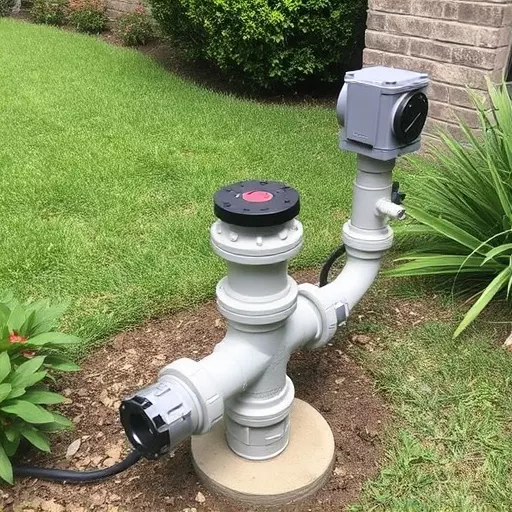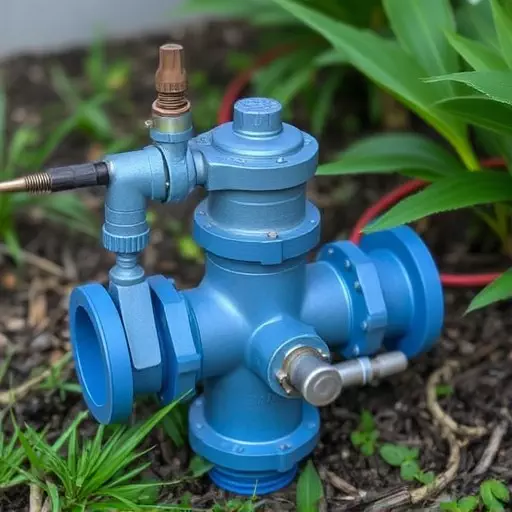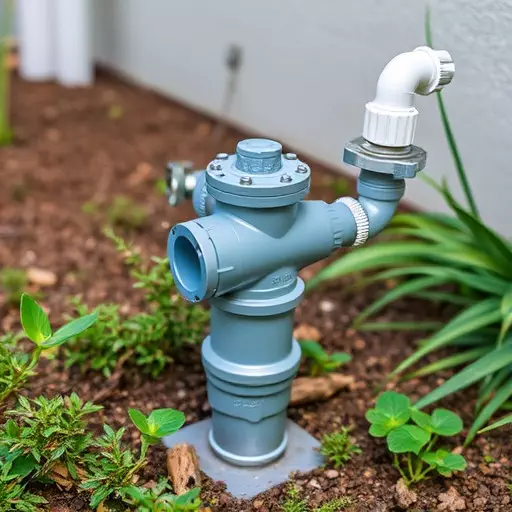The Double Check Valve Assembly (DCVA) is a critical component for maintaining safe water supply systems in Jacksonville, preventing backflow and protecting against contaminated water or chemicals. Installation requires meticulous preparation, including gathering specific tools, selecting the right DCVA, and understanding local codes. For commercial settings, the process involves shutting off the water supply, installing the DCVA in series with the pipeline, and rigorous testing. Residential installations require strategic planning based on property needs, proper selection of backflow preventers, seamless integration, regular maintenance, and inspections to ensure optimal performance and compliance with regulations. Integrating DCVAs with irrigation systems enhances infrastructure protection, system efficiency, and sustainable water practices. Common challenges during installation include precise alignment, using high-quality components, installer certification, and regular maintenance checks for longevity and performance across all irrigation systems. Thorough testing after installation is crucial, inspecting for leaks, valve operation, and pressure relief functionality, with regular maintenance records for compliance and issue tracking.
“Ensure safe and reliable water flow with a double check valve assembly (DCVA) installation—a crucial step in preventing backflow in both commercial and residential settings. This comprehensive guide covers everything from understanding the vital role of DCVAs in Jacksonville’s commercial backflow prevention systems to overcoming common challenges during irrigation backflow preventer installation. Discover the best practices for residential setups, essential tools, and materials, as well as post-installation testing tips, making your project seamless.”
- Understanding Double Check Valve Assembly (DCVA) and Its Role in Backflow Prevention
- Preparations for Installation: Tools and Materials Required
- Step-by-Step Guide to DCVA Installation in Commercial Settings
- Best Practices for Residential Backflow Preventer Installation
- Irrigation Systems and DCVA: An Optimal Combination
- Common Challenges During Installation and How to Overcome Them
- Post-Installation Testing and Maintenance Tips
Understanding Double Check Valve Assembly (DCVA) and Its Role in Backflow Prevention
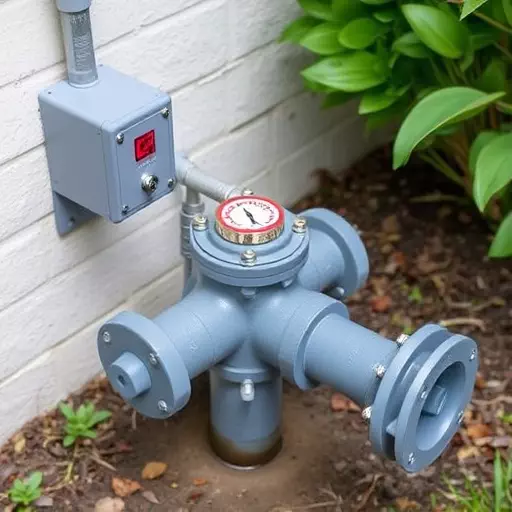
The Double Check Valve Assembly (DCVA) is a critical component in ensuring safe water supply systems, particularly in commercial and residential properties, as well as irrigation setups across Jacksonville. Its primary role is to prevent backflow—the unwanted flow of contaminated water or chemicals into the main water supply. A DCVA operates by providing two independent check valves that work together to stop any reversal of water flow, safeguarding both the water source and consumers from potential hazards.
In commercial backflow preventer installation Jacksonville, residential backflow preventer installation, and irrigation backflow preventer installation scenarios, the DCVA acts as a robust defense mechanism against various pollutants and contaminants. By installing a DCVA, property owners and managers can meet regulatory requirements and protect their water systems from potential harm, ensuring a clean and safe water supply for all users.
Preparations for Installation: Tools and Materials Required
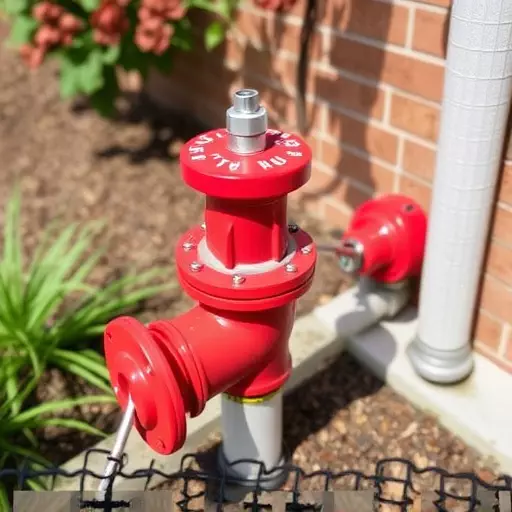
Before diving into the installation process, a thorough preparation is key for a smooth and successful double check valve assembly (DCVA) setup. For commercial backflow preventer installation in Jacksonville or residential settings, gather all necessary tools and materials to ensure efficiency. This typically includes specialized plumbing tools like pipe cutters, thread tape, adjustable wrenches, and a pressure gauge, among others. Additionally, the right DCVA, whether for irrigation backflow preventer installation or other applications, must be acquired based on specific requirements and local codes.
Proper planning involves assessing the site, understanding water pressure levels, and selecting an appropriately sized DCVA. Having the right equipment and knowledge is vital for a safe and effective installation process, ensuring compliance with local regulations for both commercial and residential backflow preventer installations.
Step-by-Step Guide to DCVA Installation in Commercial Settings
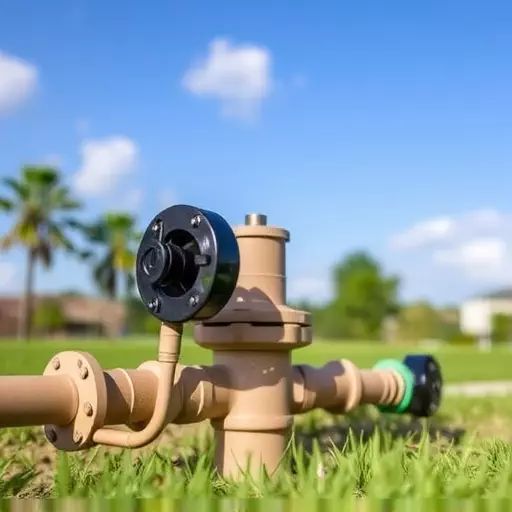
Installing a Double Check Valve Assembly (DCVA) in commercial settings is a critical process that requires careful attention to detail. For those in Jacksonville or beyond looking into commercial backflow preventer installation, understanding this step-by-step guide can ensure your system operates safely and efficiently. Begin by shutting off the water supply to the affected area. This crucial safety measure prevents any unintended water flow during the installation process. Next, locate the backflow preventer on the irrigation or supply line, ensuring it’s easily accessible for assembly.
The DCVA should be installed in series with the existing pipeline, creating a check on both upstream and downstream directions. Connect the valve assembly to the pipe using appropriate threaders or couplings, adhering strictly to manufacturer guidelines. Ensure all connections are secure and sealed properly to prevent any leaks. Once the physical installation is complete, test the DCVA’s functionality. This involves activating the valve and verifying that backflow is effectively prevented while forward flow remains unobstructed. Regular maintenance checks are also recommended to guarantee optimal performance of your commercial backflow preventer installation, whether for irrigation or residential use.
Best Practices for Residential Backflow Preventer Installation

When it comes to residential backflow preventer installation, following best practices is paramount to ensure safety and compliance with local regulations. The first step involves assessing the specific needs of the property, including water pressure levels and potential hazards. It’s crucial to select an appropriate backflow preventer for the system, such as a commercial backflow preventer installation in Jacksonville, tailored to manage irrigation, fire protection, or potable water supply.
Proper installation techniques are essential. This includes ensuring seamless integration with existing plumbing, secure fittings, and accurate testing to verify the preventer’s functionality. Regular maintenance and inspections are equally vital to guarantee optimal performance. For instance, an irrigation backflow preventer installation should be checked for any signs of corrosion or damage, as well as re-tested periodically to maintain its integrity, thereby protecting both the property and the broader water supply network.
Irrigation Systems and DCVA: An Optimal Combination

In the realm of efficient and sustainable water management, the combination of irrigation systems and Double Check Valve Assemblies (DCVAs) stands out as an optimal solution. DCVAs serve as commercial backflow preventers installation Jacksonville and beyond, safeguarding both residential and commercial properties from potential contamination. By integrating them into irrigation backflow preventer installations, property owners can ensure a robust water supply while mitigating risks associated with backflow.
This strategic pairing offers several advantages. Commercial backflow preventer installation in Jacksonville, for instance, not only protects the city’s vital infrastructure but also enhances overall system efficiency. Residencial backflow preventer installation becomes simpler and more effective, ensuring that irrigation systems operate seamlessly without compromising water quality. This synergistic approach is particularly beneficial in areas with strict environmental regulations, making it a game-changer in sustainable water management practices.
Common Challenges During Installation and How to Overcome Them

During the installation process of a Double Check Valve Assembly (DCVA), several common challenges can arise, especially in commercial and residential backflow preventer installations. One of the primary difficulties is ensuring proper alignment of the valve components, which requires precise measurements and careful handling to avoid damage or leaks. This is particularly crucial when installing irrigation backflow preventers, where even a slight misalignment can compromise water quality and efficiency.
To overcome these challenges, it’s essential to follow detailed installation guidelines specific to each type of backflow preventer. Using high-quality tools and components designed for commercial backflow preventer installation Jacksonville or residential applications is also vital. Additionally, regular training and certification for installers can significantly reduce errors and ensure the system operates effectively. Regular maintenance checks after installation further help in identifying and rectifying any potential issues early on, enhancing the longevity and performance of the DCVA in both commercial and residential irrigation systems.
Post-Installation Testing and Maintenance Tips

After successfully installing your Double Check Valve Assembly (DCVA), it’s crucial to perform thorough testing to ensure its optimal functionality and reliability, especially for commercial backflow preventer installation Jacksonville or residential backflow preventer installation scenarios. Start by checking for any leaks at all joints and connections; even the smallest leak can indicate a potential issue with alignment or sealing. Verify that the valve operates smoothly in both directions, engaging and disengaging without hindrance. Additionally, test the pressure relief functionality to ensure it activates as designed under specified pressure thresholds.
Regular maintenance is key to keeping your DCVA running smoothly over time, particularly for irrigation backflow preventer installation applications. Periodically inspect the valve for signs of corrosion or wear, especially in areas exposed to moisture or high-pressure systems. Lubricate moving parts as needed, following manufacturer recommendations. Keep records of all inspections and maintenance activities to facilitate easy tracking of potential issues and ensure your system remains compliant with local regulations, particularly for commercial or residential backflow preventer installation projects.
